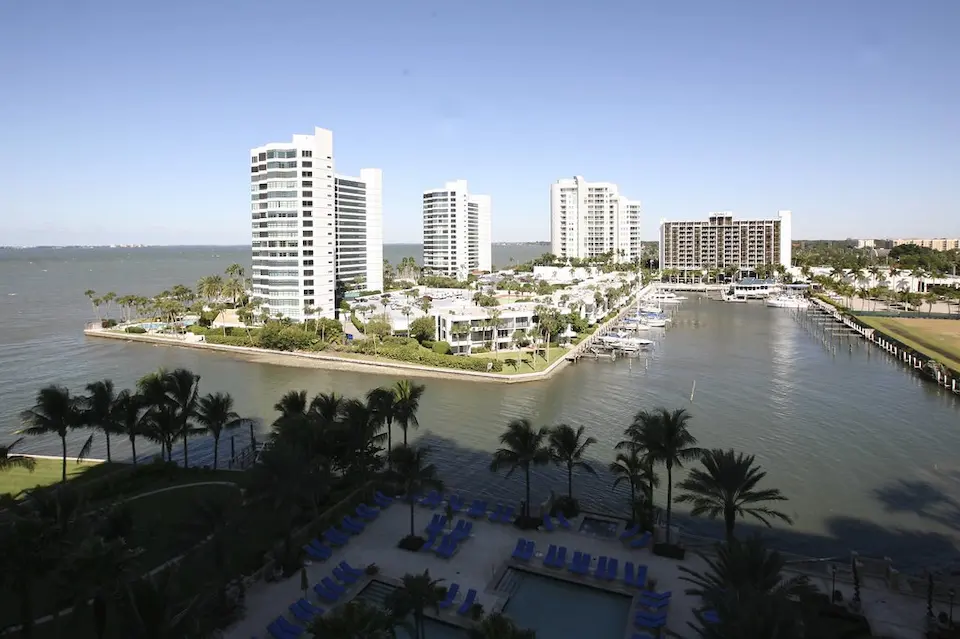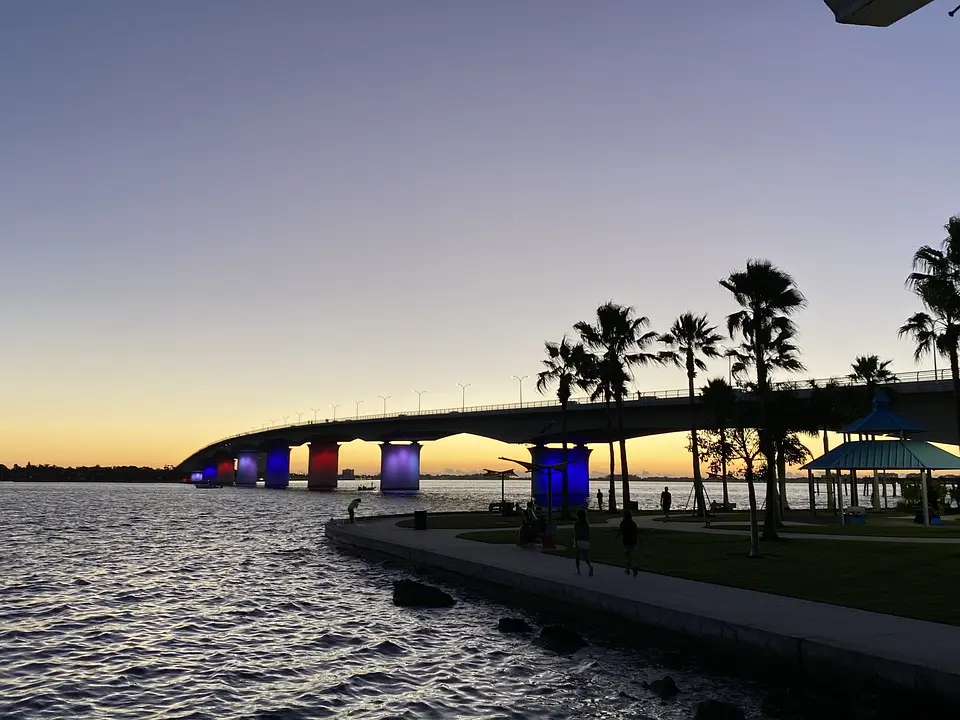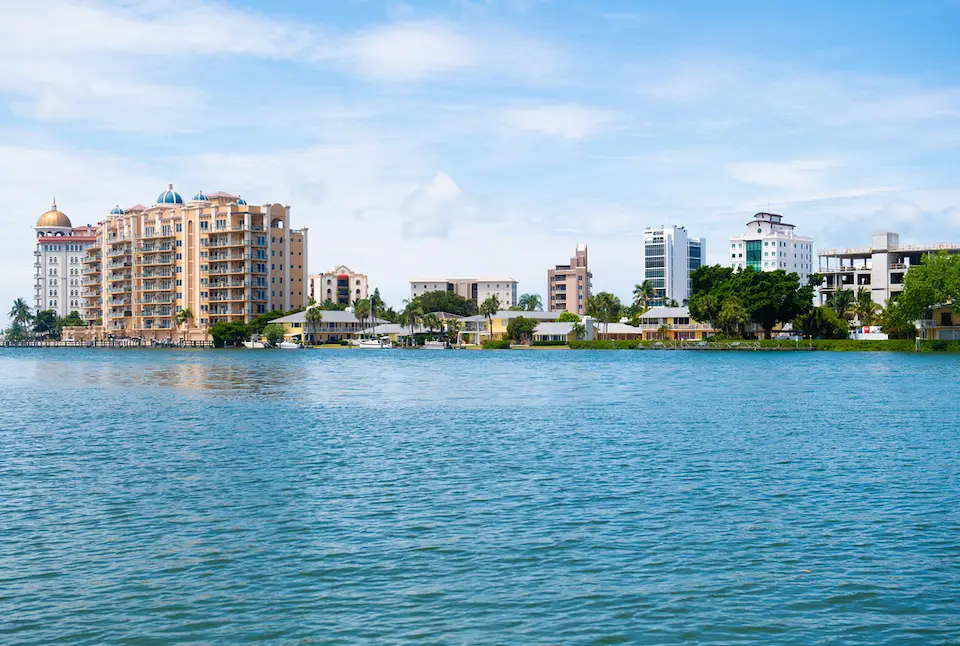Sarasota: A Florida Paradise
Sarasota is a city in the U.S. state of Florida, located about southwest of Tampa. It is a part of the Greater Tampa metropolitan area. Often called The City of Arts and Sciences, it is known for its culture, music Scene, historical value, and emphasis on environmentalism. The city is a popular vacation spot, as well as a center for environmental research, education, and business.
It is home to the University of South Florida Sarasota-Manatee, a leading research university and the state’s largest university by enrollment.
Sarasota is noted for its cultural and art attractions, including the John and Mable Ringling Museum of Art, the Mary E. Cubbage Art Museum, and the Isham Hall Art Museum. It is also known for its many public art installations, including “Art in the Streets” and “Art along the Avenues”. The city also has a thriving music scene, featuring local bands in clubs and outdoor venues. There are many outdoor recreation opportunities in the area, including boating, fishing, golfing, hiking, mountain biking, and jet skiing. The city is also home to the annual Art & Soul Festival, held the first weekend in February.
Sarasota is located at . It is bordered to the north by Longboat Key and to the west by the Gulf of Mexico. To the east and south, it is surrounded by the city of Venice and by unincorporated Manasota Key.
- People
- Schools
- Hospitals
- Nearby Cities
| Total Population | 56,102 |
| Male Share of the Population | 48.7% |
| Female Share of the Population | 51.3% |
| Senior Citizens | 27.4% |
| Employed Population 16+ | 24,969 |
| Age of the Population | 48 |
| Ese Special Programs | Gulf Gate Elementary School Primary |
| Phillippi Shores Elementary School Primary | Riverview High School High |
| Sarasota Virtual Instruction Program | Wilkinson Elementary School |
| Mcintosh Middle School Middle | Suncoast Polytechnical High School High |
- Sarasota Memorial Hospital
(Government - District/authority)
1700 S Tamiami Trl
(941) 917-9000 - Bayside Center For Behavioral Health
1650 S Osprey Ave
(941) 917-7760 - Complex Care Hospital At Ridgelake
(Proprietary)
6150 Edgelake Dr
(941) 342-3000 - Doctors Hospital Of Sarasota
(Proprietary)
5731 Bee Ridge Rd
(941) 342-1100 - Healthsouth Rehabilitation Hospital Of Sarasota
(Proprietary)
6400 Edgelake Dr
(941) 921-8600
| Location | Population | Median Family Income |
| Bradenton | 55,059 | $56,250 |
| Bradenton Beach | 929 | $69,583 |
| Holmes Beach | 4,198 | $85,845 |
| Longboat Key | 7,233 | $145,530 |
| Palmetto | 13,490 | $56,296 |
| Venice | 22,601 | $77,471 |
The history of Sarasota, Florida, began with the landing of Juan Ponce de León and his expedition in July 1521. Due to the wide variety of ecosystems found in the area, many plants and animals were first seen in North America. Spanish developers constructed a small settlement near the present-day Bradenton Beach in the mid-16th century.
In the early 18th century, British and Spanish settlers established the town of Saint Augustine. As the region became a crossroads for shipping and commerce, many wealthy landowners built luxurious estates and plantations.
Another major development came in the mid-1800s with the discovery of phosphate rock near the city of Arcadia. The industry led to the rapid growth of the community of Goodland. By the early 1900s, the area around Sarasota was a thriving citrus industry.
Sarasota has a humid subtropical climate due to its location on the Gulf of Mexico, and its weather is warm and humid throughout the year.
Mean high temperatures during the summer months (June–August) range between 79 and 86 degrees Fahrenheit, while the winter months (December–February) have a mean temperature of 62 degrees Fahrenheit.
Precipitation falls year round, though most falls occur in the summer months.
Sarasota is bordered by Longboat Key to the west and the Gulf of Mexico to the east, by Venice to the north, and by Manasota Key to the south. It is situated at the head of a narrow bay, facing the Florida mainland.
It is bordered to the north by Longboat Key and to the west by the Gulf of Mexico.
To the east and south, it is surrounded by the city of Venice and by unincorporated Manasota Key.
According to the 2010 census, Sarasota had a population of 73,832, making it the 73rd most populous city in the United States. Over 40% of the population is of Hispanic descent, and more than 90% of the population is at least 25 years old.
The median age is 34 years for males and 37 years for females. Slightly more than 13% of Sarasota’s population is under 5 years old.
Sarasota is also among the top three cities in the country when it comes to the number of married men and women.
The Sarasota area is studded with historic estates and mansions, many of which have been converted into hotels, retirement communities, law firms, and other commercial uses.
One architect’s vision of the area envisioned a community of high-rise condos and midrise townhouses and was not embraced by local residents.
The city’s architectural focus is on Art Deco and Spanish Colonial Revival styles. Downtown Sarasota is architecturally significant for its collection of early 20th century buildings and for its renovation efforts.
Many of the area’s structures are listed on the National Register of Historic Places.
Sarasota is known as the city of arts, culture, and entertainment, due to the presence of many museums, theaters, and galleries in the area.
The John and Mable Ringling Museum of Art, the Mary E. Cubbage Art Museum, and the Isham Hall Art Museum are just a few of the art museums in Sarasota.
The area is also home to the Sarasota Opera, Sarasota Ballet, and Sarasota Symphony, performing arts organizations that feature many nationally and internationally recognized musicians and conductors.
Sarasota is home to an eclectic and international mix of cuisines.
The city’s food scene is diverse, with stalls, cafes, and communal tables offering a range of fare from burgers and tacos to Middle Eastern and Southeast Asian entrees. The city has two culinary landmarks: Schrader’s Seafoods and the Longshoreman Restaurant.
Schrader’s Seafoods was founded in 1921, and was initially a fish market and canning business.
Schrader’s Seafoods is one of the oldest seafood markets in the country, with a large selection of fresh seafood and a daily catch of local fish, shrimp, scallops, oysters, and lobsters. The Longshoreman Restaurant has been serving traditional seafood and American comfort food to Sarasota residents and visitors for over 80 years.
Boating is a popular recreational activity in the Sarasota area, and the city has both private and public marinas.
There are also several yacht clubs and sailing schools in the area.
The city is also home to a number of golf courses, including the Palmetto Dunes Municipal Golf Course, the Sarasota-Manatee Golf Association, and the Bayshore Golf Club.
The city is located along two major rivers, and is also home to several riverside parks, including Riverview Park, Barge Canal Park, and the Ringling Park.
The Legend of Sara De Sota
A colorful tale preserved in its original form and surrounded by the glamour and charm of an old legend centers about the origin of the name, “Sarasota” -The story was written by George F. Chapline, of Charendon, Ark., and is based on a legend of the Florida aborigines. Mr. Chapline wrote it after spending a winter here around the year 1900. The story follows:
Chichi-Okobee, the fleet and strong, heir by blood and physical prowess to the thousand tepees and stalwart warriors of Black Heron’s Seminoles, stood motionless in the morning sun before the camp of the great white chief, Do Soto. Two guardsmen, with burnished helmets and shields, and with naked blades drew nigh this prince of the Seminoles.
A harsh word of command broke the stillness of the sun-bathed morning.
With broad brown palm uplifted – the sign of peace – and with steadfast gaze, Chichi-Okobee bade the guardsmen of De Soto draw nigh: “Peace, I surrender to the warriors of the great white chief.” These were the words of Chichi-Okobee. Bound, he was taken to De Soto. “Hold him hostage for our passage safe”, said Hernando. Deep into the Everglades, skirting lakes and lagoons, parching upon blistering beaches, Chichi-Okobee was borne by the Spaniard. No murmur, no word of complaint escaped the captive’s stoical yet princely lips. He had beheld Sara, the lovely daughter of the white chieftain; Sara, lovelier than all the princess maidens of the Seminole camp. He had surrendered himself a willing captive that he might suffer the thongs of captivity, the humiliation of bonds that he might occasionally feast his own lustrous eyes upon the orbs of this princess of the house of Do Soto.
But Chichi fell ill. The confinement, the lack of the food of his fathers, the want of his body for the long stride of the chase the absence of the medicine man, and most of all the unsatisfied heart-yearning, had done their work, and Chichi lay helpless, wasting, parching, dying of the fever of the Everglades.
Their efforts in vain, the physicians of the Spanish camp gave up. The Seminole prince must die. Sara Do Soto begged permission to minster in the dying hour of Chichi-Okobee.” Her ministrations wrought a marvel Chichi mended. Love’s potion more powerful than the medicaments of medicine Mon. brought back the-steady gaze to the eye, brought back health and strength to Chichi, Now was the daughter of De Soto taken ill, The physicians of the camp hung over her tapestried couch with the tender solicitude of fathers, yet all-in vain; the malady that had stricken her seemed all the stronger for their care. Chichi begged of De Soto that he might go to his father’s camp and fetch the great medicine man, Ahti – the medicine man who knew the secrets of the, bad spirits of the Everglades. Though a man might be dead, yet it had been known that Ahti’s skill had brought back the throb of the heart.
Chichi-Okobee had tired the small-deer of the forest, and his long, lithe limbs bad won him many trophies in the sports of his tribe, yet never sped he so fast; never had the tropic trees beheld such speed as this bronz(e) young prince plunged by them. One moon and yet another and Chichi-Okobee, with Ahti the medicine man stood before the tent of Sara Do Soto. Strange incantations were uttered, mysterious herbs were offered in more mysterious smoke, that the spirit of the swamp might be appeased. Long vigils did Ahti keep by the side of the dying girl. Chichi stood mute without the camp, with his eyes fixed upon the idly flapping doorway of the sick girl’s tent, rending his deerskin cape. Chichi read the message-Sara was dead. The Great Spirit had called her. Ahti’s powers had been matched with one greater than his.
Chichi sought the presence of De Soto, and there poured forth to the Spaniard the love he bore for the dead girl. He begged that he might select the place of her burial and take part in the ceremony. De Sota, struck with the earnestness of the young Seminole, and melting under the caressing melody of his rich voice and savage eloquence, gave consent.
Okobee told of a land-locked, peaceful bay, the loveliest spot along the gulf-kissed shores of Florida., as the spot where he wished to bury the matchless Sara. He begged for and received permission to go to his camp and secure a body of his fellow warriors to make up a guard of honor to attend upon the last rites of his dead sweetheart.
On the morning following his departure, there appeared, drawing nigh De Soto’s camp, winding in silent, single file, a body of 100 Seminole braves, at whose head came Chichi-Okobee. All were bedecked in full war paint., all bore the solemn mion of their young chieftain; every quiver bristled with its complement of sicno-dipped arrows; every bow was strung. Chichi-Okobee’s war bonnet swept the earth; as he wralked, his jaspertipped spear flashed in the sunbeams, and like his followers, his quiver was filled with the arrows of warfare.
Three large canoes, bedecked with dark mosses of the forest, swept up the beach, propelled by the swift, strong strokes of six solemn Indians. In the first and largest of these the body of Sara De Soto was tenderly Iaid. Do Soto and one guardsman were the sole passengers aboard this death craft, save Chichi-Okobee and six stalwart Seminoles who propelled the canoe. Silently the hundred braves took their places in the two remaining canoes. Silently, the leading canoe swept out and up the bay, followed by the other two. At midday, Chichi-Okobee bade the funeral fleet come to a stand. In the middle ground of the most peaceful, the most beautiful body of water that the Spaniard had ever beheld, Okobee would bury his love. With the white bay flowers in her blue-black-hair, and the feather from the wing of the black heron in her hand, the remains of Sara De Soto wore lowered into the deep. Chichi-Okobee was rowed to the leading canoe of his followers, where he mounted the prow, leaving Hernando, his guardsman and oarsmen in the funeral barge. Behold! a wonderful thing transpired. At a signal from the young chief every warrior sprang to his foot, tomahawk in hand. In strange, weird unison the war chant of these hundred warriors lifted and swelled across the bosom of the bay.
As its mystery-laden echo died away in the deep of the forest along the shore line, the blades of 100 tomahawks crashed into the frail bodies of the two war canoes. A moment of ripple, a moment of bubbles, and all was still. De Soto and his companions, in silent astonishment, gazed upon the grave of Chichi-Okobee and his hundred companions-at-arms-they had gone to guard the resting place of their young chieftain’s love.
The bay — “Sarasota Bay,” as it has since been known — like a mirror of steel, reflects the doings of the stars and whispers to the caressing winds the story of the love of Chichi-Okobee and the beautiful Spaniard.
The elders of the Seminoles repeat the legend of the children, and say that the spirits of Chichi-0kcobee,and his warriors are in eternal combat with the spirits of evil and the children of the storm god, holding the pass to the gulf and protecting the resting place of Sara De Soto.
It is said that the sullen roar of the gulf, as it breaks upon the beaches, is but the noise, of conflict, and that the whitecaps which chase each other and break and tumble across the pass are but the wraths of the warriors of Okobee and the children of the sea, tossing their spirit arms, and meeting in never ending contest for the possession of the bay.
This, the legend of Sara De Sota and Chichi, the fleet and strong — the legend of Sarasota Bay.
It is peaceful, it is beautiful.
Schedule your appointment now
Contact
Contact us and receive the best personalized advice


